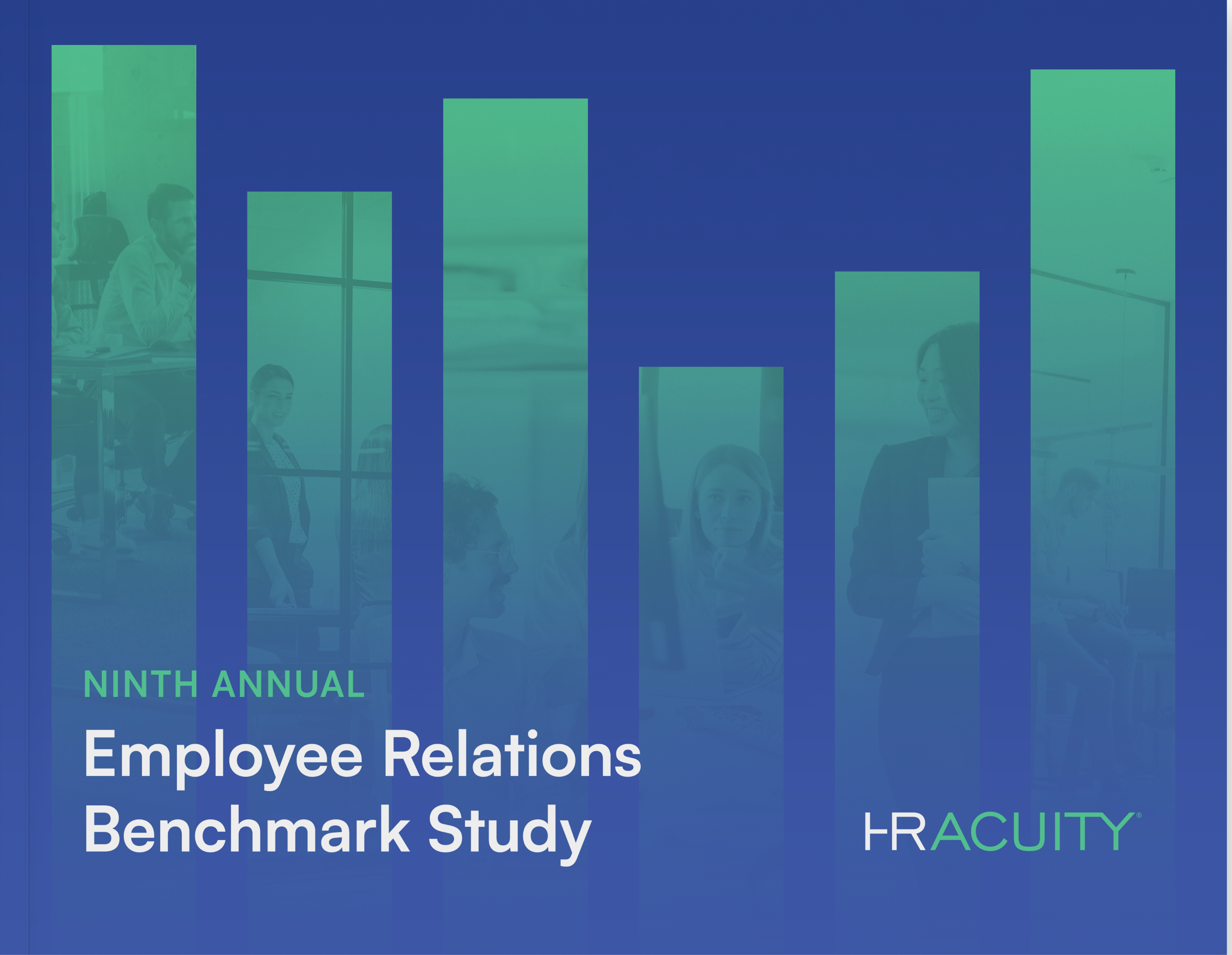Let’s face it: Most organizations know they need a solid employee relations strategy. But when it comes to actually building one? That’s where things can get murky.
A good strategy doesn’t just check boxes. It builds the kind of workplace people want to be part of. One where employees feel seen, valued and proud of the work they do. And when that happens? You see it in performance, productivity and employee satisfaction.
Whether you’re starting from scratch or just tightening the screws, here are some practical, real-world employee relations strategies to help you move forward—with clarity, impact and more confidence.

What is an Employee Relations Strategy?
Think of your employee relations strategy as your playbook for how you show up for your people everyday. It’s not just policies or a process doc gathering dust. It’s how we build trust, set expectations and create consistency—across every conversation, complaint or career milestone.
A strong ER strategy means:
- ️ An open door that really stays open
- Investigations handled with care, start to finish
- Zero tolerance for harmful behavior—and the action to back it up
Why Do Organizations Need an Employee Relations Strategy?
Here’s the reality: If you’re not shaping your employee relations strategy, it’s shaping itself—and that can go sideways fast. What’s at stake? Not just day-to-day harmony, but trust, culture and yes, your organization’s reputation.
The truth is simple: Your employee relations strategy will either be a strategic asset or a risk.
When you don’t prioritize your employee relations strategies, you open the door to legal exposure, higher turnover and declining morale and trust. But when you put the right employee relations strategies in place, you:
- Reduce legal and compliance risks
- Handle issues consistently and fairly
- Create a workplace that’s safer, more transparent and built on trust
Let’s set one thing straight: A strong employee relations strategy isn’t just good for your people—it’s a smart business decision.
When businesses prioritize employee well-being, they build a workforce that’s healthier and more resilient. That leads to greater trust, increased motivation and fewer issues like turnover or litigation.
Effective employee relations strategies help organizations resolve conflict quickly and fairly. When employees know their voices will be heard, they’re more likely to speak up—giving you clearer insights and more opportunities to strengthen culture.
And here’s the payoff: When people feel supported, they stay. That’s why strategies to improve employee relations have a direct impact on retention, engagement and performance. The best examples of employee relations strategies will show you that.
How to Create or Improve Your Organization’s Employee Relations Strategy
You know implementing strategies to improve employee relations matters—but how do you actually do it?
Here are our top tips to build employee relations strategies that drive real results for your organization and, most importantly, your people.
Establish Compelling Company Values and Clear Vision and Mission Statements
Employees want to feel good about what they do and where they do it. That starts with clear company values and a strong vision and mission. Your mission statement shapes culture, guides behavior and builds trust.
Work with your leadership team to define values that genuinely reflect your organization. Ideally, they align with what your employees already believe in. Even if they don’t, clarity is key. Values should drive expectations across the business.
Make them visible, actionable and real. Recognize employees who live them out and hold leaders accountable. Culture starts at the top.
How: Gather your executive team and align on your mission, vision and values. Create a simple, shareable deck and make it public to support transparency and talent attraction.
Create a Strong Onboarding Process
Onboarding is your first real promise to employees—and their eyes are on you.
It’s where you show them: “Here’s how we do things around here—and yes, we mean it.”
Go beyond paperwork. Set the tone early with clarity, consistency and care. When employees feel supported from day one, they’re more likely to speak up, lean in and stay.
Make sure employees know how to report issues anonymously, understand the importance of speaking up and feel confident navigating your culture from day one.
Done well, onboarding builds trust, sets clear expectations and opens lines of communication early. It helps prevent misunderstandings, fosters belonging and shows that fairness, transparency and support are more than just ideals.
How: Build a consistent onboarding plan that covers workplace policies, support channels and early check-ins. Give your new team members an onboarding buddy to support them in their first few weeks at the organization. Partner with your employee relations team to make sure new hires know how to raise concerns and where to find help.
Foster Open Communication
Employees can’t thrive in isolation—they need clear, ongoing communication and a safe way to share their needs, concerns and goals. Your employee relations strategy should actively support this.
Move beyond one-way messaging. Create flexible channels that encourage honest, two-way dialogue. Success depends on how quickly and consistently your employee relations team—HR, managers and supervisors—responds to feedback and concerns.
How: Build simple templates, a shared vocabulary and clear processes with timelines that every employee relations team member follows and every employee can rely on.
Compensate Fairly
Feeling valued for their work is a key driver of employee satisfaction. Offering pay at or above industry standards makes a real difference, whereas falling behind can damage morale and increase turnover. Though securing raises can be challenging, it’s an investment that pays off in the long run.
Check sites like Glassdoor and competitor job ads to benchmark your compensation.
How: Compensation isn’t only about salary. Explore alternatives such as flexible hours, job sharing or reorganizing tasks within departments to reward employees without significant extra costs.
Encourage Work-Life Balance
Unlimited PTO doesn’t mean much if no one feels safe using it. If you’re serious about balance, leaders have to model it. Otherwise, it’s just lip service. Employees are watching—if you say you care about well-being, show it. That’s how trust gets built. And kept.
Living your promises builds trust and shows employees they’re valued as whole people—not just workers. Small touches, like giving employees their birthday off, send a powerful message that personal well-being matters.
When work-life balance is genuinely supported, employees are more engaged and loyal. This reduces burnout and turnover while boosting overall morale—key outcomes of a successful employee relations strategy.
How: Ensure leadership models healthy work habits and openly encourages time off. Communicate clearly about PTO policies and remove barriers that make taking leave difficult. Consider adding meaningful benefits like birthday days off, volunteer or mental health days to reinforce your commitment.
Promote DE&I
In 2025, talking about DE&I can feel tricky, but the truth is simple: Treating people fairly and equally has always been—and remains—a legal and ethical imperative. If your employee relations strategy doesn’t include equity and inclusion, it’s incomplete.
Fair treatment. Equal opportunity. A workplace where everyone feels safe and seen. That’s not optional—it’s the bar. Promoting DE&I requires intentional actions that foster inclusion and respect for all employees. You can learn how to improve DE&I in the workplace here.
How: Build DE&I into your policies and training programs, ensure fair and unbiased hiring and promotion practices, foster safe spaces for dialogue and regularly use employee feedback and data to measure and improve inclusion.
Set and Enforce Policies for Company Compliance
Strong employee relations start with clear policies everyone understands—and consistent enforcement that leaves no room for confusion or favoritism. When your policies are fair and applied equally, you build trust and protect your organization from legal risks. It’s not just about avoiding trouble; it’s about creating a workplace where everyone knows the rules and feels safe and respected.
How: Develop straightforward, accessible policies aligned with legal requirements and your company values. Train managers and HR teams to enforce these policies consistently and document all incidents thoroughly. Use technology to track cases and spot trends early, so you can address issues before they escalate. Clear communication and accountability turn compliance from a burden into a strategic advantage.
Take Employee Complaints Seriously and Find Solutions
Complaints are inevitable—but how you handle them defines your culture.
Our Misconduct Study found that 65% of employees who saw their issue investigated and resolved said they’d recommend HR.
That’s not just good process. That’s trust in action.
Complaint handling should reinforce fairness, transparency and care. These moments often reveal deeper workplace challenges, and how you respond sends a clear message about your values.
How: Use an employee relations issue management platform to securely track and manage all cases in one secure place. Tap into analytics to spot trends early and respond proactively. Equip managers with clear triage guidance—and give them access to tools like managER so they can log and resolve issues confidently and consistently. Empowered managers create faster, more reliable outcomes.
Gather Team Feedback
Collecting feedback from your team is essential—and it shouldn’t wait until someone is leaving. Regular input helps you spot issues early, boost engagement and refine your employee relations strategy in real time. Aim to check in with your employee relations team at least twice a year to see what’s working and what needs improvement.
Exit interviews add valuable insight by capturing honest feedback on culture, management and job satisfaction from those moving on. This often uncovers concerns that weren’t raised earlier, giving you a chance to address deeper or systemic problems.
How: Schedule regular pulse surveys, focus groups or one-on-one check-ins throughout the year to gather honest feedback from employees and your employee relations team. Keep questions clear and focused on workplace experience. Combine this ongoing input with thorough exit interviews to get a full view of the employee lifecycle. Use these insights to adjust policies, improve communication and strengthen your culture before issues escalate.
Measure and Track Employee Relations Metrics
Here’s the thing: If you’re not tracking what matters, you’re flying blind. (You can learn more in our Ninth Annual Employee Relations Benchmark Study, which is a call to action for organizations to start tracking key ER KPIs.)
Too many teams get blindsided by issues they could have seen coming—if they’d been paying attention to the data.
Want to protect your culture and your credibility? Start with your metrics.
How: Define clear, relevant metrics aligned with your company goals, such as case volume trends, resolution times and employee satisfaction scores. Use an employee relations management platform with customizable dashboards and analytics to collect and visualize data in real time. Review these insights regularly with HR and leadership to spot trends, adjust strategies and drive continuous improvement.
Want to know how better reporting can elevate your employee relations strategy? See how Tory Niceswander, Head of Global Employee Experience at The Hershey Company, did it with HR Acuity.
Continuously Evolve Your Employee Relations Strategy
No employee relations strategy should ever be set in stone. Your team needs regular meetings to review key metrics, evaluate what’s working and identify areas for improvement. Open communication is essential—both employees and HR should feel empowered to share feedback anytime.
How: Schedule consistent check-ins to review your employee relations scorecard and discuss trends. Use surveys, focus groups or informal feedback channels to gather honest input from employees and HR. Adjust your strategy based on this feedback to keep it agile, relevant and effective. Regular dialogue ensures your approach evolves with your workforce and business needs.
Share Progress with Your Team
Sharing your employee relations scorecard results company-wide shows how your team drives progress toward shared goals. Transparency—highlighting successes and challenges—builds trust and encourages engagement. When employees see the full picture, they feel more connected and motivated to contribute.
How: Present scorecard results regularly through company meetings, newsletters or internal portals. Use clear visuals and straightforward language to make the data accessible. Invite feedback and questions to create an ongoing dialogue. This openness fosters collaboration and keeps employee relations top of mind across the organization.

Employee Relations Strategy Tools and Tactics
To strengthen your employee relations strategies, you need the right tools in place. The right technology can transform your approach, helping you build trust, ensure fairness and reduce risk.
- Workplace case management: Every harassment or misconduct case needs a documented, reliable process for effective resolution, ideally with embedded best practices.
- Workplace investigation management software: Handling investigations with integrity and consistency is essential to maintaining trust and compliance.
- Documentation software: Organizations must record issue details and resolutions. Tools like HR Acuity make it easy to securely store all documentation in one centralized, accessible location.
- Anonymous reporting tools: A speak-up hotline empowers employees to communicate concerns without fear of retaliation, fostering a culture of openness and accountability. Our Misconduct Study reveals 72% of employees feel confident reporting issues when anonymous reporting tools are available.
Together, these tools create a safer, more transparent workplace that protects employees and your company’s reputation.
How HR Acuity Helps You Build a Stronger Employee Relations Strategy for 2025
At HR Acuity, employee relations isn’t just what we do; it’s who we are.
We built this platform to help teams like yours handle issues with consistency, care and confidence.
If you’re ready to strengthen your ER strategy and build real trust across your organization, take a Curiosity Tour with us. Let’s see what’s possible—together.




